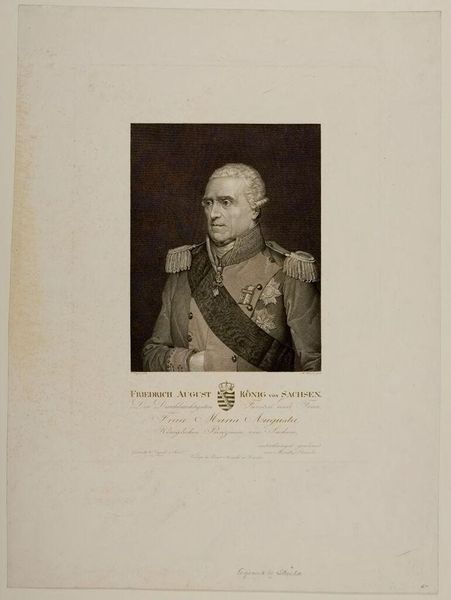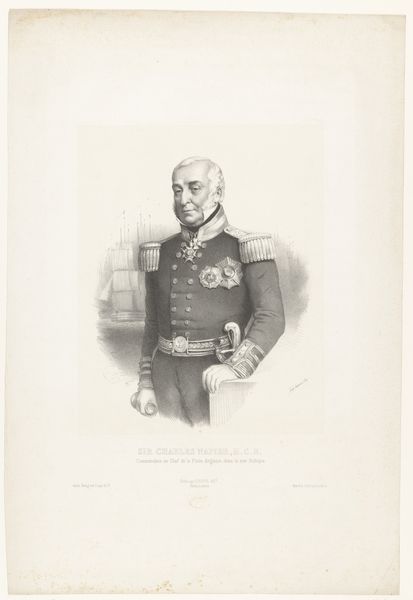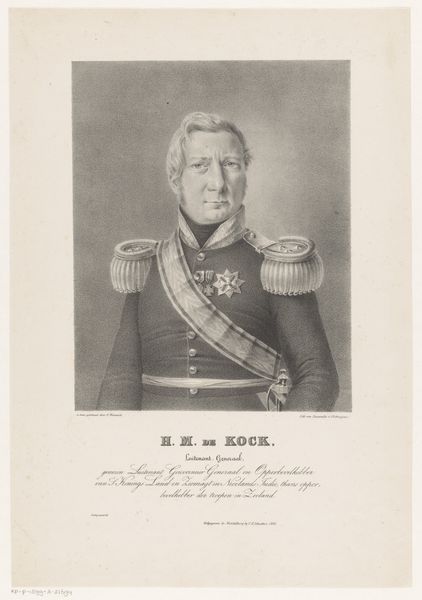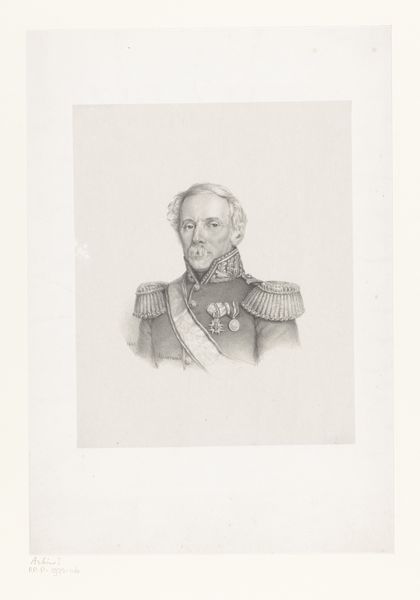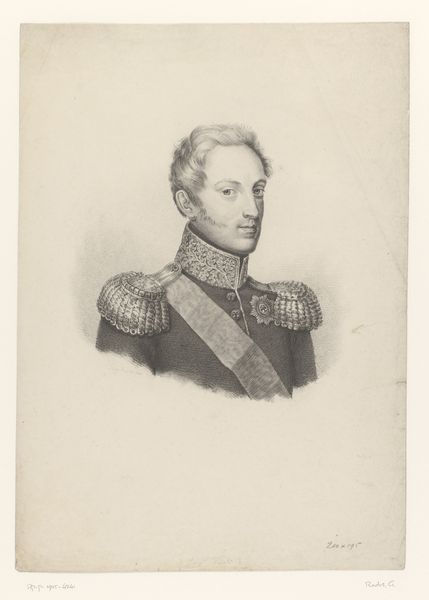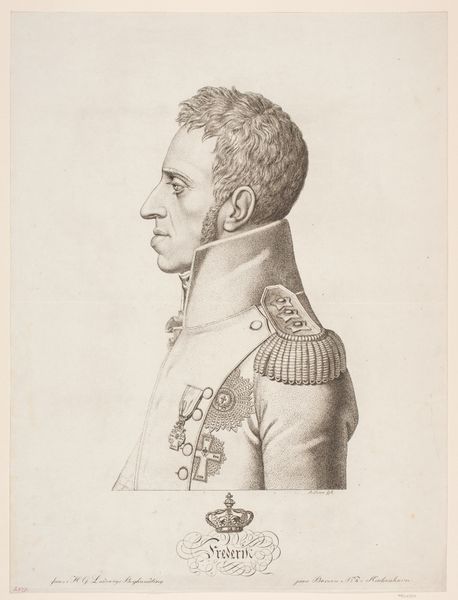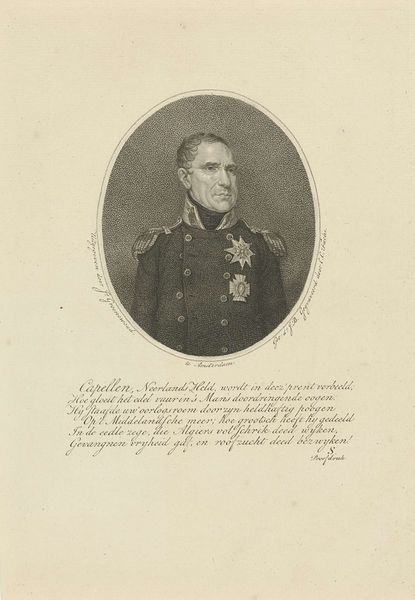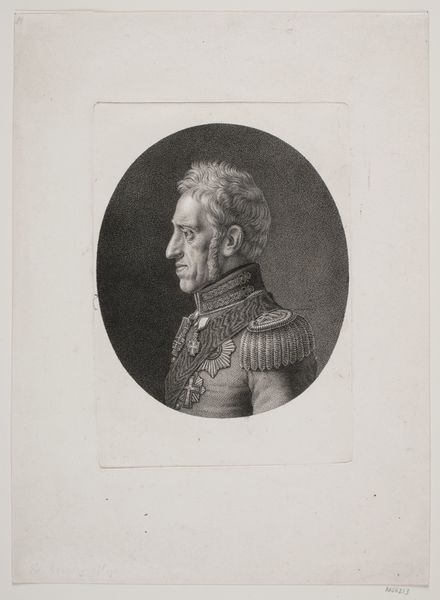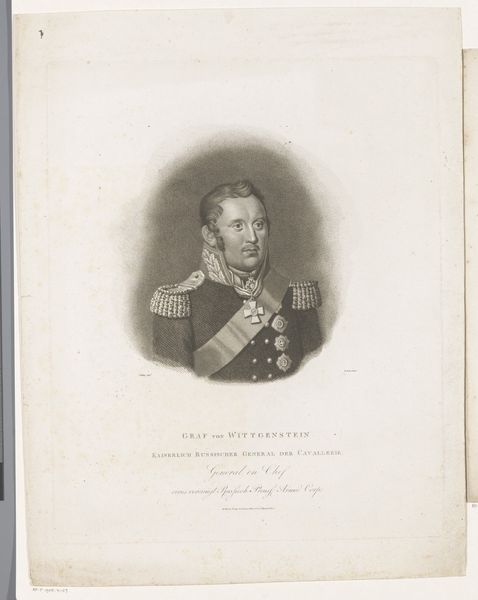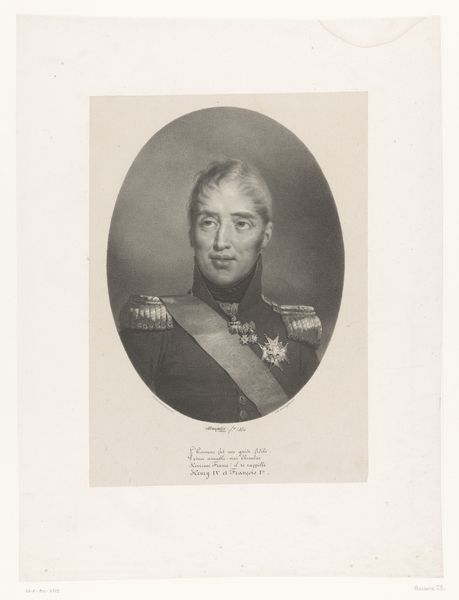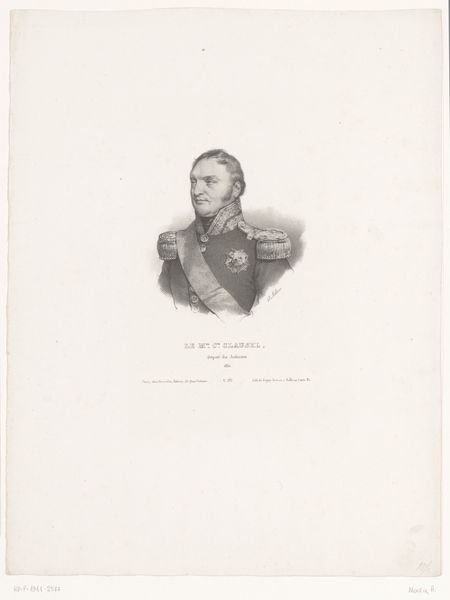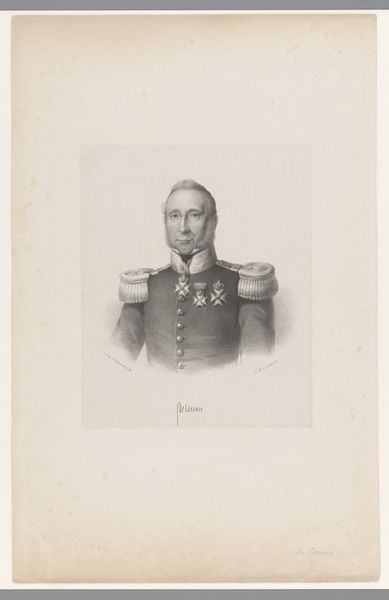
print, engraving
#
portrait
#
neoclacissism
# print
#
archive photography
#
historical photography
#
history-painting
#
engraving
Dimensions: height 360 mm, width 277 mm
Copyright: Rijks Museum: Open Domain
Curator: Let's discuss this print, "Portret van Friedrich August I von Sachsen," created by Moritz Steinla between 1818 and 1831. It's a striking example of neoclassicism, an engraving now held at the Rijksmuseum. Editor: It has such a formal air. The strong lines, the dark backdrop, the stern gaze...it exudes authority, almost oppressively so. It feels very rooted in a particular, very masculine, idea of power. Curator: Absolutely. And that's key to understanding its significance. This print immortalizes Frederick Augustus I, King of Saxony, during a period of immense social and political upheaval in Europe. The image seeks to project stability and legitimacy through the visual language of power, a response to the anxieties and vulnerabilities of monarchy amidst revolutionary fervor. Look at his attire, the carefully rendered decorations and medals, signs of an established and ordained hierarchy. Editor: Symbols play such a strong role. The sash, for example, feels crucial. These aren't just pretty accessories; they're visual cues designed to communicate status and evoke a specific emotional response – respect, awe, perhaps even a sense of the sacred right to rule. His rigid pose speaks to that, too. Every detail serves a purpose, reinforcing the king's position and underscoring a historical narrative that aligns with dynastic continuity. Curator: Precisely. The artist uses historical precedent through neoclassicism to shore up contemporary claims to power. However, by focusing solely on aesthetics, it ignores that power structures invariably intersect with gender and race, as well as that portraiture can be deployed as an instrument of cultural legitimization for colonial exploitation. Editor: So we see these symbols and the associated history—they carry cultural weight regardless of individual perception. One must acknowledge both. The impact of iconography is about collective emotional and cultural memory. Curator: Yes, and examining that impact means asking critical questions about how historical events, colonialism, and systemic inequality were represented through art like this. Editor: Looking closely has given me new respect for how artists deploy subtle messaging, intentional or not, in visual representations. Curator: And for me, it underlines how crucial it is to view seemingly objective historical artifacts through a critical and contemporary lens.
Comments
No comments
Be the first to comment and join the conversation on the ultimate creative platform.
